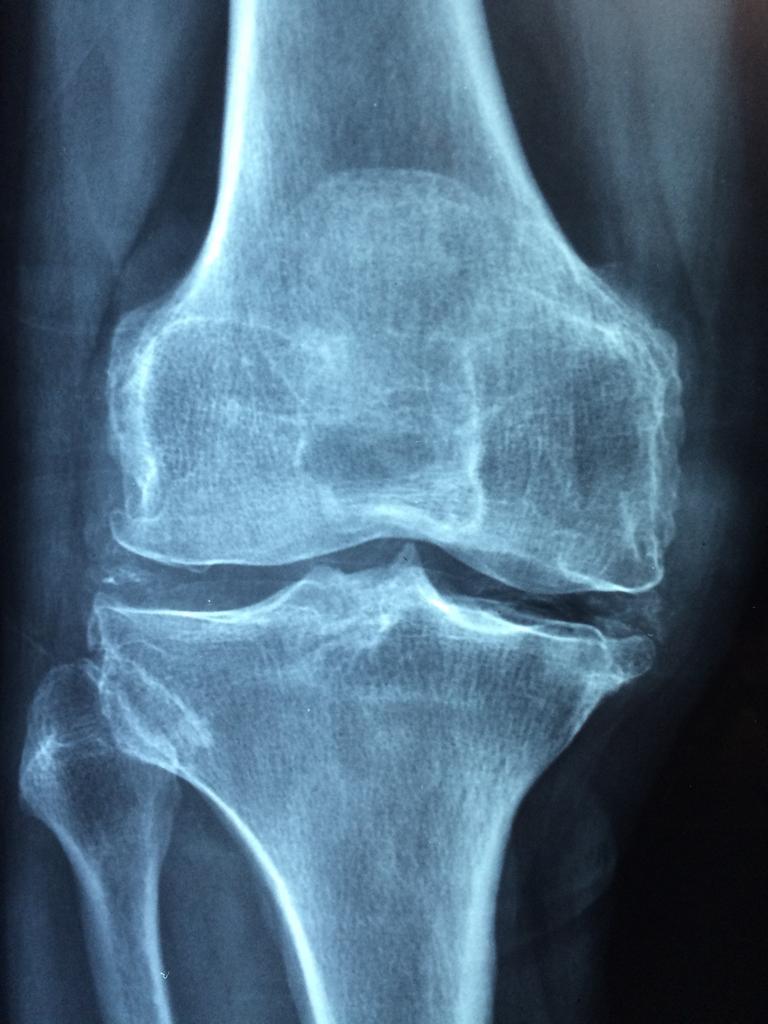KNEE ARTHRITIS
Arthritis is the consequence of the “wear and tear” of the joint. The smooth articular cartilage (cushion) that helps your knee joint glide, may wear thin. Generally, the pain of arthritis develops gradually, although sudden onset is also possible. The knee may become stiff and swollen, making it difficult to move. Pain and swelling are worse in the morning or after a period of inactivity. Pain may also increase after activities such as walking, stair climbing or kneeling. The pain may often cause a feeling of weakness in the knee, resulting in “locking” or “buckling.”
Three basic types of arthritis may affect the knee joint:
-
Osteoarthritis (OA) is the most common form of knee arthritis. OA is usually a slowly progressive degenerative disease in which the joint cartilage gradually wears away.
-
Rheumatoid arthritis (RA) is an inflammatory type of arthritis that can destroy the joint cartilage. RA can occur at any age and generally affects both knees.
-
Post-traumatic arthritis can develop after an injury to the ligaments or cartilage in the knee, or after a fracture.
If you don’t get treatment, the condition keeps getting worse until resting and medications no longer relieve your pain. The knee gets stiff and inflamed. Bone spurs might build up at the edges of the joint. When the cartilage wears away completely, bones rub directly against each other. This makes it very painful for you to move and you become less active. To avoid the pain the muscles controlling your joint get weak, and you may start to limp.

Treatment options:
In its early stages, arthritis is treated with nonsurgical measures.
-
Lifestyle modifications: losing weight, switching from running or jumping exercises to swimming or cycling, and minimising activities that aggravate the condition such as climbing stairs.
-
Using supportive devices such as a cane, wearing energy-absorbing shoes or inserts, or wearing a knee sleeve can be helpful.
-
Other measures may include applications of heat or ice, water exercises, creams or elastic bandages.
-
Several types of drugs can be used in treating the symptoms of arthritis; such as anti-inflammatory medications and analgesics to take orally, and corticosteroids which can be injected into the joint.
Surgical options:
-
Osteotomy: this consists of changing the mechanical alignment in order to mitigate the symptoms. It is generally offered to young active patients in whom a replacement is not advisable. After surgery, the patient must avoid weight bearing on the operated limb for at least 6 weeks. After this period, the patient can resume walking with partial weight bear, and commence physiotherapy for muscle strengthening. The procedure is painful but provides the patient with a salvage opportunity before having a knee replacement.
-
Partial replacement: the knee joint is composed of 3 different components: 2 joints between the femur and the tibia and 1 between the femur and the patella. All of them are replaced in a total knee replacement. However, in a partial replacement, just one of them is resurfaced which provides the patient with a more normal knee and less painful recovery. Hospital stay is usually shorter and patients recover a normal life quicker than a full knee replacement.
-
Total replacement: as the name, this procedure resurfaces all of the components of the knee joint. It is usually reserved for older patients with a knee which presents extensive disease. The procedure usually presents a slower recovery compared with a partial replacement but the advantage is that all the arthritic components are resurfaced hence the chance of developing ongoing pain is lower. Knee replacements have a long recovery period of 6-12 months before the patient resumes their normal life.
